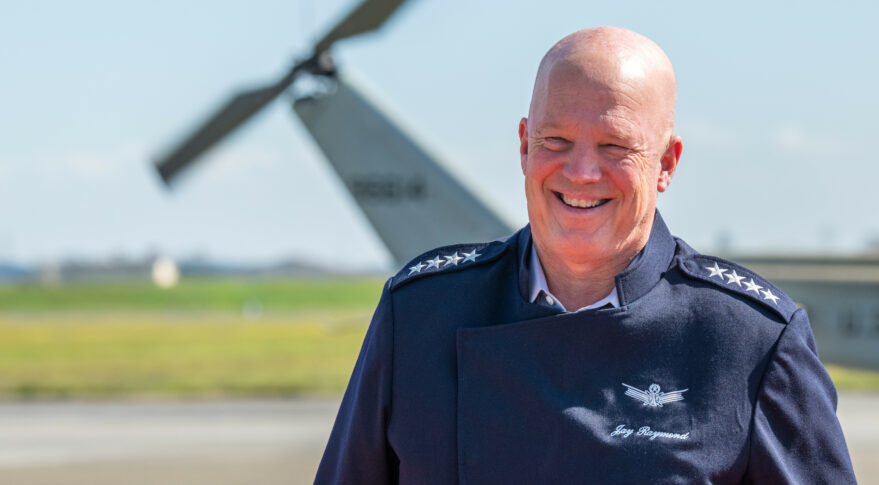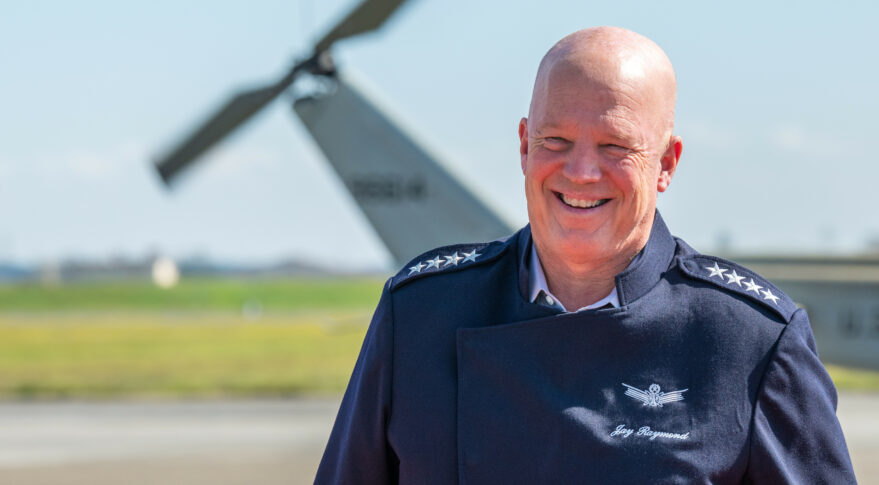
For U.S. Space Force, Raymond’s retirement marks the end of an era (Image Credit: Space News)

WASHINGTON — The first chief of the U.S. Space Force Gen. John “Jay” Raymond on Nov. 2 will relinquish command to Gen. B. Chance Saltzman, and will retire after 38 years of military service.
Defense Secretary Lloyd Austin is scheduled to attend the change-of-command ceremony at Joint Base Andrews, Maryland, and recognize Raymond for his role in laying the foundation for the nation’s first military service focused on the space domain.
Long before he was sworn in as chief of the U.S. Space Force in January 2020, Raymond had been the leading figure in the U.S. Air Force’s space organization. When the Pentagon re-established U.S. Space Command in August 2019, Raymond was named commander.
So when Congress signed legislation in December 2019 authorizing the Space Force as the nation’s sixth military branch within the Department of the Air Force, Raymond was seen as the obvious choice to lead it.
As the first official member of the new service, Raymond had to start building it from the ground up, transferring people and funding from the Air Force’s space units. Amidst all this, he had to navigate a charged political landscape as the Space Force in its early days was viewed as a vanity project of former President Trump and was parodied on a Netflix show.
At a White House event on the Space Force’s first anniversary, then Vice President Mike Pence announced the members of the service would be called guardians.
While many predicted President Joe Biden would reverse course on the Space Force, the administration gave full support and over the past two years boosted the service’s budget amid concerns that U.S. satellites have become military targets and need to be better defended.
Raymond played a central role calling attention to U.S. military and intelligence assessments that Russia is deploying anti-satellite weapons that could threaten U.S. systems, and has urged the Space Force to innovate faster to stay ahead of China. He also has advocated for the U.S. and all other nations to adopt “norms of behavior” to keep outer space safe from weapons and debris.
Accomplishments, challenges ahead
Saltzman, who was Raymond’s top choice to succeed him, inherits a Space Force of about 16,000 personnel, half uniformed and half civilian.
In a recent interview with SpaceNews, Raymond said he is proud of what’s been accomplished in less than three years, and is confident that the Space Force is on solid footing.
“When we established this service we wanted to build it to be very agile, very lean. We flattened bureaucracy, we reduced headquarters layers, we stood this up largely out of existing resources,” he said.
Being small, however, can make it difficult to keep up with the administrative and bureaucratic demands associated with a military service, Raymond warned. The new chief also will be under pressure to modernize aging systems and resolve a way forward for the Space Force’s reserve component.
Raymond said Saltzman “is going to have to figure out what is the right size of the service.”
“When you operate inside of the bureaucracy of the Department of Defense, you have to have enough mass to be able to just attend meetings, get things through and approved,” he added. “Do we have enough, or do we have to grow a little bit?”
The good news for the incoming chief is that “over the last handful of years, the Department has prioritized space,” said Raymond. “And there has been an increase in our budgets.” Going forward, “we just need to be able to articulate what it is that we need, and have the analytical rigor that says: here’s why.”
An organization within the Space Force that Raymond pushed to create is the Space Warfighting Analysis Center. The SWAC is a group of “our smartest PhDs and our best and brightest operators” in charge of what Raymond calls the “force design” that will inform future procurements of satellites and other systems. “I’m very comfortable today that we’ve got capabilities and I’m comfortable that we can protect and defend that,” he said, “but we have to complete this work.”
“As the threat continues to evolve, and as threats to our space assets continue to emerge, we must transform our space architectures to be more capable and resilient,” he said. “If we do this right, it will allow us to capitalize on commercial industry capabilities. I think the way that we’re moving on force design is going to open up the opportunity to leverage more commercial and more allies and partners.”








